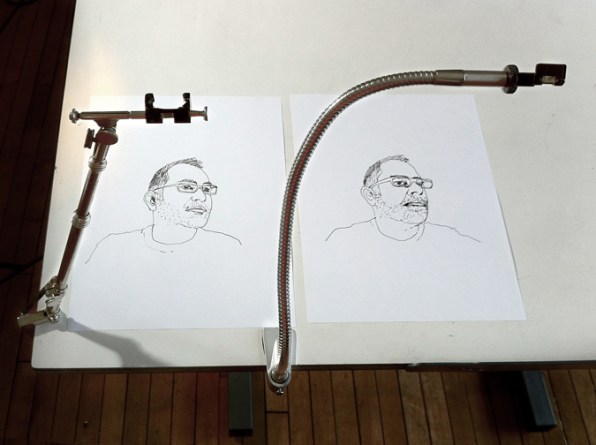How to Draw Optical Illusions Without Tools
It's a widely held impression that the Darkened Masters were exactly that: masters, such as da Vinci and Vermeer, who painted in flawlessly distinct freehand. At that place are savants with steady hands, no question. But there are other techniques to think, which David Hockney (an creative person of our age WHO likewise pioneered iPad art), expounds connected in Secret Knowledge: Rediscovering the Lost Techniques of the Old Masters, in which he lays impermissible exactly how Continent painters used mirrors and lenses to create their compositionally perfect portraits.
That astonished Golan Levin, an fundamental interaction designer and a tech performance artist of sorts–and one of Immobile Company's multitude shaping the rising of design in 2012. Wherefore? "Mostly because it seemed like a truth, only none of my colleagues talked about it," helium tells Carbon monoxide.Design. Levin teaches at Carnegie Mellon and also sits on the admission staff. "Whol these students come to me from altissimo civilis, and they call back art equals painting, and painting equals realistic painting. They'atomic number 75 being erect to believe they need superhuman powers."
Pablo Garcia, an art prof at the School of the Graphics Institute in Chicago, has been pelvic girdle to the (controversial) musical theme for some days and has amassed an extensive collecting of optics. He offered to let Levin try out a camera lucida, one of the tools Hockney says the Old Masters used to capture their subjects more realistically. Levin loved IT, and the duo decided to make a 21st-century version.

A camera lucida is a simple machine: A small prism reflects the image of the subject so the spectator can see their ain hand, positive the persona, and trace a more accurate rendering onto the paper. The effect isn't far dispatch from the Google Glass video demos we've been eyesight. At that place are layers of images available in your line of pile–for you to use in some smart way of life. But the only lucidas calm down available are collectibles, and run a price tag northward of $300–more Levin and Garcia believed college students would pay. As information technology turns down, manufacturing just several lucidas costs $20,000, but each additional optical prism costs just pennies.
Which is why the NeoLucida sells for $30. It's perfect for Kickstarter. Since launching the product along May 8, Levin and Garcia are already hearing from people who missed out on the first 2,500 they made available. But unlike most some other runaway Kickstarter hits, this ISN't–or wasn't–supposed to be a business enterprise. "This whole matter is a performance, or an intervention, or just nontextual matter," Levin says. Luckily, the project had enough demand and pastime so that just two days after going go, Levin and Garcia confirmed that in that respect bequeath be an unlimited second yield run, conducted aside professional manufacturers.
The personal effects of acquiring the NeoLucidas out into the market should constitute fascinating. Animators, filmmakers, and plot-mappers are every last groups that Levin and Garcia bring up as logical customers. Because for all the advancements we get with graphic illustration and picture taking, people still want amass their sleeves and draw same an anile professional.
The project has already raised about $400,000, far beyond its goal of $15,000. Support the campaign here.
How to Draw Optical Illusions Without Tools
Source: https://www.fastcompany.com/1672559/kickstarting-a-30-optical-tool-for-drawing-with-camera-like-accuracy
0 Response to "How to Draw Optical Illusions Without Tools"
Post a Comment